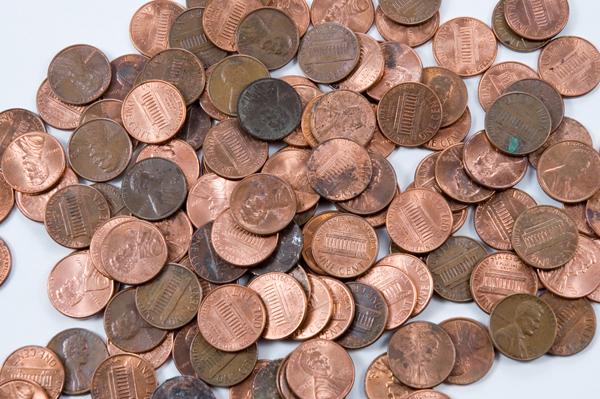
What's a Penny Made Of?

A penny is not what you think. Indeed, from 1793 to 1837, a cent was pure copper. But newer pennies are made mostly of zinc.
Here's the history, according to the U.S. Mint:
- From 1837 to 1857, the cent was made of bronze (95 percent copper, and five percent tin and zinc).
- From 1857, the cent was 88 percent copper and 12 percent nickel, giving the coin a whitish appearance.
- The cent was again bronze (95 percent copper, and five percent tin and zinc) from 1864 to 1962, except: In 1943, the coin's composition was changed to zinc-coated steel. This change was only for the year 1943 and was due to the critical use of copper for the war effort. However, a limited number of copper pennies were minted that year.
- In 1962, the cent's tin content, which was quite small, was removed. That made the metal composition of the cent 95 percent copper and 5 percent zinc.
The alloy remained 95 percent copper and 5 percent zinc until 1982, when the composition was changed to 97.5 percent zinc and 2.5 percent copper (copper-plated zinc). Cents of both compositions appeared in that year.
The penny's original design was suggested by Ben Franklin. The word "penny" comes from the British "pence." More than 300 billion pennies have been minted since 1787, according to pennies.org.
Here's a neat fact. The faces on all coins currently in circulation face left, except for Abe Lincoln on the penny. Lincoln's likeness is an adaptation of a plaque done by sculptor Victor David Brenner. The direction that Lincoln faces on the cent was not mandated but was simply the choice of the designer.
What's more, it costs more than a cent to make a penny. In 2011, it cost 2.4 cents to manufacture a penny, but production costs fell to 1.7 cents in 2014, according to a report by the United States Mint. The nickel also costs more than its face value to make (about 8 cents), according to the report. But other coins make money for the mint, including the dime (just 3.9 cents) and the quarter (9 cents), the report said. Overall, in 2014 the mint made $289.1 million on seigniorage (the difference it takes to make a coin versus the coin's worth), even though pennies and nickels cost it $90.5 million to make, according to the Wall Street Journal.
This article was originally published on Jan. 13, 2013. Original article on Live Science.
Sign up for the Live Science daily newsletter now
Get the world’s most fascinating discoveries delivered straight to your inbox.










